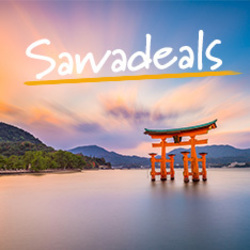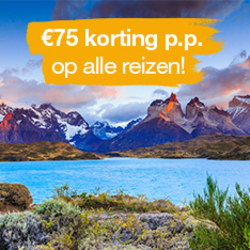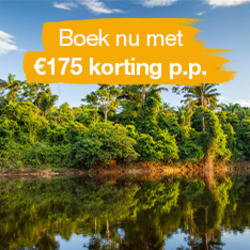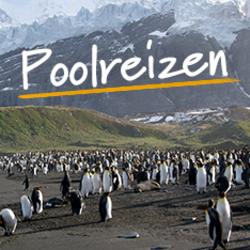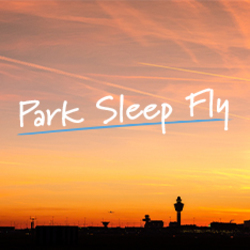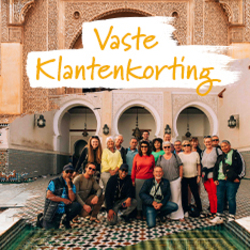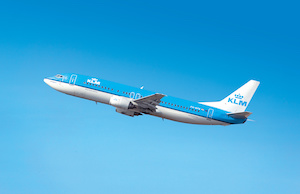Food
- All breakfasts are included throughout the trip. Restaurant stops for lunch and dinner are selected throughout the itinerary to allow you to try out good quality local cuisine. In Guatemala, Honduras and El Salvador, expect to see rice and beans as one of the main staples on the menu! For Guatemala, the hand-made tortilla is ubiquitous and delicious. Due to the proximity with Mexico, food can be spicy, and choices such as chiles rellenos, tamales, tacos, burritos etc are often found on menus. Indigenous regions feature many dishes with turkey, such as “kakik”, a turkey stew. The Caribbean region has “tapado” - a seafood stew cooked with coconut milk. Antigua is very cosmopolitan - Italian, French, Mexican, Thai, Indian and Chinese restaurants are all on hand. For Honduras, our stop in Copan offers a wide variety of restaurants (similar to Antigua in Guatemala). The typical Honduran plate is the “Plato Tipico”, a combination of beef, fried plantain, beans, rice, cabbage salad and a piece of salty local cheese, The “baleada” is a common snack: a flour tortilla filled with beans, cheese and sour cream. For El Salvador, definitely try the famous “pupusas”, thick hand formed tortillas with the centre filled with beans, cheese or a combinaton of the two, always accompanied by “curtido”, a spicy salsa to add on top. Again, the “Plato Tipico” is always on hand. There are plenty of local beers to try in all three countries, with prices ranging from USD 1 to USD 3. Gallo in Guatemala, Salvavidas in Honduras and Pilsener in El Salvador are all great lager beers perfect for the tropical climate.
Activities
- Cycling
- Road Cycling
- Multi-Country Cycling Holidays
- New Cycling Holidays
- Multi-Country Holidays
- All breakfasts are included throughout the trip. Restaurant stops for lunch and dinner are selected throughout the itinerary to allow you to try out good quality local cuisine. In Guatemala, Honduras and El Salvador, expect to see rice and beans as one of the main staples on the menu! For Guatemala, the hand-made tortilla is ubiquitous and delicious. Due to the proximity with Mexico, food can be spicy, and choices such as chiles rellenos, tamales, tacos, burritos etc are often found on menus. Indigenous regions feature many dishes with turkey, such as “kakik”, a turkey stew. The Caribbean region has “tapado” - a seafood stew cooked with coconut milk. Antigua is very cosmopolitan - Italian, French, Mexican, Thai, Indian and Chinese restaurants are all on hand.For Honduras, our stop in Copan offers a wide variety of restaurants (similar to Antigua in Guatemala). The typical Honduran plate is the “Plato Tipico”, a combination of beef, fried plantain, beans, rice, cabbage salad and a piece of salty local cheese, The “baleada” is a common snack: a flour tortilla filled with beans, cheese and sour cream.For El Salvador, definitely try the famous “pupusas”, thick hand formed tortillas with the centre filled with beans, cheese or a combinaton of the two, always accompanied by “curtido”, a spicy salsa to add on top. Again, the “Plato Tipico” is always on hand.There are plenty of local beers to try in all three countries, with prices ranging from USD 1 to USD 3. Gallo in Guatemala, Salvavidas in Honduras and Pilsener in El Salvador are all great lager beers perfect for the tropical climate.
Food
-
1
Arrive Guatemala; transfer to Antigua
Those on the group flight arrive into Guatemala City in the early evening, and will be transferred to Antigua, the old Colonial capital of Guatemala. Antigua has a spectacular setting surrounded by volcanoes: Agua, Fuego and Acatenango all overlook the town. Our accommodation has a great vantage point to observe the activity of Fuego Volcano, as well as a lush garden and pool. It is also close to the central plaza and within walking distance of some excellent restaurants. There maybe some time today to do our bike fitting and take a short ride around town. Otherwise, you’ll have the chance to freshen up and catch up on sleep in preparation for our adventure tomorrow.Accommodation: Hotel Casa del Parque/Hotel Convento Santa Catalina or similar
-
2
Cycle around Antigua; coffee tour and free afternoon
Begin the day with breakfast on the open-air patio, surrounded by lush tropical plants! Our tour briefing is next, to familiarize ourselves with the route we’ll be taking. Once on our bikes, we’ll have an initial warm up ride in the area surrounding Antigua, the Panchoy Valley and the lower slopes of the volcanoes. Stopping for lunch at a coffee plantation gives us time to have a look at the harvesting, sorting and roasting process of this important crop. Our ride passes through several Indigenous villages including San Pedro las Huertas, San Juan del Obispo and San Antonio Aguas Calientes, which is noted for indigenous handicrafts. Upon our return to Antigua, you have the rest of the afternoon free to explore the town before we go for a group meal this evening.Accommodation: Hotel Casa del Parque/Hotel Convento Santa Catalina or similarTerrain: Mostly level within the Panchoy valley, with several short/steep climbs along lower slopes of the volcanoes. 85% paved/15% dirt
-
3
Transfer to San Jose de Caldera; ride around Acatenango Volcano, finish in San Lucas Toliman.
Following an early breakfast, we set off on a short transfer to Pastores, a small town noted for leather work. Our biking begins near San Jose de Caldera, where our first challenging ascent will take us around the north face of Acatenango Volcano. There are spectacular views looking down onto the rugged territory below, which includes many ‘milpas’ – small farms devoted to corn that provides the staple diet of the Mayan peoples. After the final ridge on Acatenango comes a very fast descent, with many curves in the road. Upon reaching the busy indigenous centre of Yepocapa we’ll take a short break, before continuing west to the hot and humid Pacific coastal plain. This area is dominated by sugar cane plantations. From Santa Lucia we transfer by coach towards Lake Atitlan and the eco-system quickly changes again as we re-enter the cool, green hills of Highland Guatemala. There is a final descent just before reaching the lake and our destination: San Lucas Toliman. Our hotel overlooks Lake Atitlan, has lovely rooms, gardens and a swimming pool, making it a great base for the next two nights.Accommodation: Hotel Toliman or similarTerrain: Gradual climb departing San Jose de Caldera, followed by rugged terrain with climbs around Acatenango volcano, with steep descent to Yepocapa, then more gradual descent to Santa Lucia. 95% paved / 5% dirt
-
4
Cycle around Lake Atitlan; boat trip to explore villages, visit Maximon shrine.
Today we’ll have a great ride around the southeast part of Lake Atitlan. Given that the road does not follow the lakeshore, be prepared for some climbing and a fast descent. This is rewarded by multiple opportunities to enjoy views over the lake and the surrounding volcanos of Toliman, Atitlan and San Pedro. With a short transfer to Godinez, we avoid the bulk of the steep climbs and start the stage with a winding descent down to lake level and the town of Panajachel, our lunch stop. We recommend trying the fresh fish, caught straight out of the lake. This afternoon a boat takes us to the west side of the lake to visit some of the more traditional villages such as San Juan, San Pablo or San Marcos. Whilst in this area we hope to see an indigenous public market and a local women’s co-operative known for its textile weaving. There will also be the chance to visit the shrine of a highland Indian deity called Maximon, clad in colourful clothing, wearing a Stetson hat and smoking a cigar.The rest of the afternoon is free to relax, borrow the hotel kayaks to discover the lake or just enjoy soaking up your new surroundings. For those who wish, an optional ride of around 10 miles can be added on. Accommodation: Hotel Toliman or similarTerrain: Rolling hills, several climbs / steep descents. 100% paved
-
5
Morning ride to Cocales; transfer to Pacaya; volcano hike.
Our bike ride begins from the hotel, with a short but steep ride out of town to reach the road that leads back down towards the Pacific coast. This ride enjoys some beautiful scenery, from the cool highlands to the sweltering heat of the Pacific lowlands at Cocales. Here we load up the bikes for our transfer towards Guatemala City. On the way we’ll visit Pacaya Volcano, one of the country’s most active volcanos, for a guided hike to the crater. This is a challenging hike, due to the steep terrain and high altitude, and will probably take around 2-3 hours to complete. Observing an eruption is a once in a lifetime experience and Pacaya Volcano is one of the few places in the world where you can get up close and personal with relative ease. In Guatemala City we stay in a boutique hotel in Zone 10, an area with some good restaurants nearby.Accommodation: Hotel San Carlos or similarTerrain: Steep climb departing San Lucas, then mostly fast descent to Cocales. 100% paved
-
6
Transfer, then short ride to Mariscos; boat transfer to Rio Dulce.
We transfer to the lowland province of Izabal, a jungle coastland with tropical rainforest, Caribbean beaches and a very distinct culture to that of the highlands. Our bike ride begins at the Mariscos intersection, this small town is set on the south shore of Lago Izabal which is Guatemala’s largest lake. We pedal past sections of lowland rainforest and plantations of banana, plantain and African oil palm, passing a few small villages along the way. Whilst our ride is quite short, there is a bit of climbing involved as we surmount the large ridge separating Lago Izabal from the Motagua River Valley. From Mariscos we board a boat for a 1.5-hour voyage to our next destination, Rio Dulce.Our tranquil accommodation has a lake front position and we’ll stay in thatched roof cabins, most of which have sun decks and hammocks. There is free use of the kayaks and easy access to the lake via a swimming dock.Accommodation: Tortugal Lodge or similarTerrain: Mariscos ride is undulating, 80% paved / 20% rough-broken paved
-
7
Boat trip to Livingston and Caribbean coast.
Today is a non-cycling day to rest and relax and our accommodation is fantastic for this with several shaded spots on the dock to enjoy whilst watching the boats come and go. If you want to look around town boat trips into Rio Dulce are available from the hotel. There is an interesting Spanish fortress to discover, or you could borrow one of the kayaks to get there under your own steam. For an adventure further afield, join a full day boat trip to the Rio Dulce National Park and a white-sand Caribbean beach called Playa Blanca. This tour travels through a jungle clad canyon with a hundred metre rock face before reaching the town of Livingston. With its Garifuna culture, Livingston has the true feel of a West Indian Island town. On the return you can swim in the river or soak in the thermal waters, and keep a look out because occasionally manatees are spotted in this area. This tour is included, but optional if you prefer to rest at the hotel. Accommodation: Tortugal Lodge or similar
-
8
Transfer to Rio Hondo; cycle to Honduras and to the Copan Mayan site.
After breakfast we checkout and travel by boat to Rio Dulce town, to re-join our bus and the bikes for today’s journey into Honduras. At Rio Hondo, we get in the saddle for a ride through rolling terrain. This area is generally hot and dry, with little shade, so on a particularly hot day this could make the biking feel more challenging. Near San Juan Ermita we begin a fast descent into the Rio Camotan Valley, which we follow most of the way up to the border with Honduras. This is a relatively easy border crossing which means we can continue biking towards pretty Copan. It’s a short, steep climb, then a fast descent to arrive at our hotel. We’ll be located on a quiet street outside town with the Parque Central just a five-minute walk away. If you need a massage, this is your opportunity!Often in Copan the central plaza is full of food stalls offering a wide variety of Honduran, Guatemalan and Salvadoran specialties in a vibrant setting.Accommodation: Casa de Café or similarTerrain: From San Juan Ermita it’s a nice descent down to Camotan, with a more gradual ascent up to the border. A short but steep section of climbing within Honduras, followed by a good descent down to Copan. 100% paved
-
9
Tour of the Copan ruins; optional afternoon cycling or other activities.
Today we have a guided visit of Copan, the world-famous Mayan site which is sure to be one of the highlights of your itinerary. Although not the largest of Mayan cities (25,000 population as opposed to Tikal’s 100,000+), for more than 400 years Copan was the Mayan cultural centre and by far the most advanced in terms of sculpture, astronomy and hieroglyphic writing. Local guides are excellent and will regale you with information about the current society of Copan, complete with local gossip and legends. Bikes will be available for an optional bike ride in the area surrounding Copan this afternoon. Locally there are also zip lines, thermal waters, a rescue centre for Macaws and coffee plantations to discover.Accommodation: Casa de Café or similar
-
10
Cycle from Honduras to Guatemala to El Salvador in one day!
Today we cycle in three countries on the same day – how many people can say they’ve done that!? Starting in Honduras, we re-trace our route to the border crossing into Guatemala. From here we continue down the Rio Camotan Valley, have a short vehicle transfer and then bike to the El Salvador border. Entering El Salvador can take a little longer than the other border crossings, and this may affect today's overall mileage. Once we have cleared customs our ride continues to the pleasant highland town of Metapan. If there is time, we may even bike as far as Santa Rosa Guachipilin, from where we’ll jump in the vehicle for the last stage to Suchitoto. This beautiful town is El Salvador’s Spanish Colonial gem, one of the few to escape major damage during the revolutionary war in the 70’s and 80’s. We have two nights here to discover the area.Accommodation: Hotel La Posada de Suchitlan or similarTerrain: Honduras: initial climb, then fast descent to border. Guatemala: fast, then mild descent to Camotan; Esquipulas to Anguiatu rolling hills, some climbing. El Salvador: Anguiatu to Metapan fast descent; Metapan-Santa Rosa Rolling terrain, moderate ascents. 100% paved
-
11
Morning ride to Cinquera; explore town and transfer back to Suchitoto.
Enjoy lake views at breakfast, and then it’s back on our bikes for a ride to the little town of Cinquera. This town was substantially damaged during the revolutionary movement, and there are various monuments to commemorate the efforts of the local population as well as murals depicting Salvadoran heroes. We’ll stop in an excellent small restaurant for a chance to try a “comida tipica” and then it’s a choice of transferring back to Suchitoto in the coach or biking, if you wish.The rest of afternoon is free to discover Suchitoto, a very attractive colonial town with cobble stone streets, well preserved colonial homes, an active artistic scene with galleries and museums dedicated to famous Salvadoran artists and a thriving street life. Alternatively, an optional biking stage is available which involves a lake crossing and a challenging climb to Chalatenango. There is lovely scenery throughout with views down to the lake, surrounding hills and volcanos.Accommodation: La Posada de Suchitlan or similarTerrain: Well paved road out to Cinquera, with good shade throughout, rolling hills. 100% paved. Optional afternoon stage is challenging, with lots of climbing running through hilly region north of Lago Suchitlan. 100% paved. Today's mileage is broken down as follows: 12 miles from Suchitoto to Cinquera, plus an optional 12 miles if you do the return journey by bike and then an optional afternoon ride of 10 miles.
-
12
Cycle to Aguilares; transfer to Ahuachapan; cycle on the famous Ruta de las Flores.
Our morning begins with a short biking stage to Aguilares, before we transfer to the western side of El Salvador and head up into the cool, green mountain climate of the northwest. This area is known as the ‘Ruta de las Flores’, a verdant and serene cluster of villages along a route that’s lined with flowers during the right season. Our destination is Apaneca, known as ‘rivers of wind’ in the indigenous language. This is the highest town in El Salvador (1,450 metres) and as you might have guessed it has a cool, windy climate. As with all of the towns in the region, coffee is the prime crop grown here and the area is a hive of activity during harvest season.Our afternoon ride begins at Ahuachapan and follows a very winding road that takes us to Concepcion de Ataco. This town has popular weekend arts, crafts and cuisine market and is a great spot for lunch, set in exotic gardens surrounded by birds. After a short final section, we arrive at Hotel Santa Leticia, a tranquil mountain resort set inside a coffee finca with beautiful views and a pool.Accommodation: Hotel Santa Leticia or similarTerrain: Mostly level morning stage; afternoon stage consistent climbs, then fast descent to the hotel. 100% paved.
-
13
Downhill ride to Zunzan; transfer to Guatemala; ride to ferry for Monterrico.
Today involves a long downhill ride from the cool, lush green heights of the Ruta de las Flores to the hot, dry Pacific plains. The variety of eco-systems we pass through is amazing, from border-line cloud forest, to rainforest and then dry-tropical forest. There is fantastic scenery as we descend, full of dense coffee plantations fed by small streams, with large trees providing shade. At Zunzan we load up the bikes for a short transfer, crossing the El Salvador-Guatemala border and ending up at Taxisco, where our ride begins towards the Pacific coast. Our first stop is La Avellana, where we take a boat trip through the mangrove estuary which separates the mainland from our destination on the Pacific shore, Monterrico. Hopefully we’ll see water and shore birds, fresh-water turtles, fish and even otters.Our hotel has beautiful rooms, perfectly manicured grounds, welcoming staff, a large infinity pool and excellent Italian food! The beaches have volcanic black sand, which makes them very hot, and there are often large waves and tidal rips so unfortunately this isn’t a great spot for swimming. However, this section of the Pacific coast is noted for nesting sea-turtles between June and December (Leatherback and Olive Ridley). This excursion can be arranged locally.Accommodation: Hotel Dos Mundos or similarTerrain: Well paved, fast downhill on the morning stage. Rough, paved mild downhill on the afternoon stage.
-
14
Cycle to Iztapa; transfer to Antigua
For our final biking stage we’ll follow the Pacific coast as we head to Iztapa. This is an easy ride and relatively flat, though there is likely to be some traffic on this route. At Iztapa we’ll load up the bikes and transfer back to the lovely Antigua, where we started two-weeks ago. Enjoy some free time in Antigua to do some last minute souvenir shopping, wander around town or enjoy the hotel facilities as you reflect on the adventure!Accommodation: Hotel Casa del Parque/Hotel Convento Santa Catalina or similarTerrain: Easy, level ride, 100% paved.
-
15
End Antigua
Our adventure comes to an end after breakfast today, and those on the group flights will be transferred back to the airport in time for the group flight. Land Only clients are free to make their own arrangements any time today.




